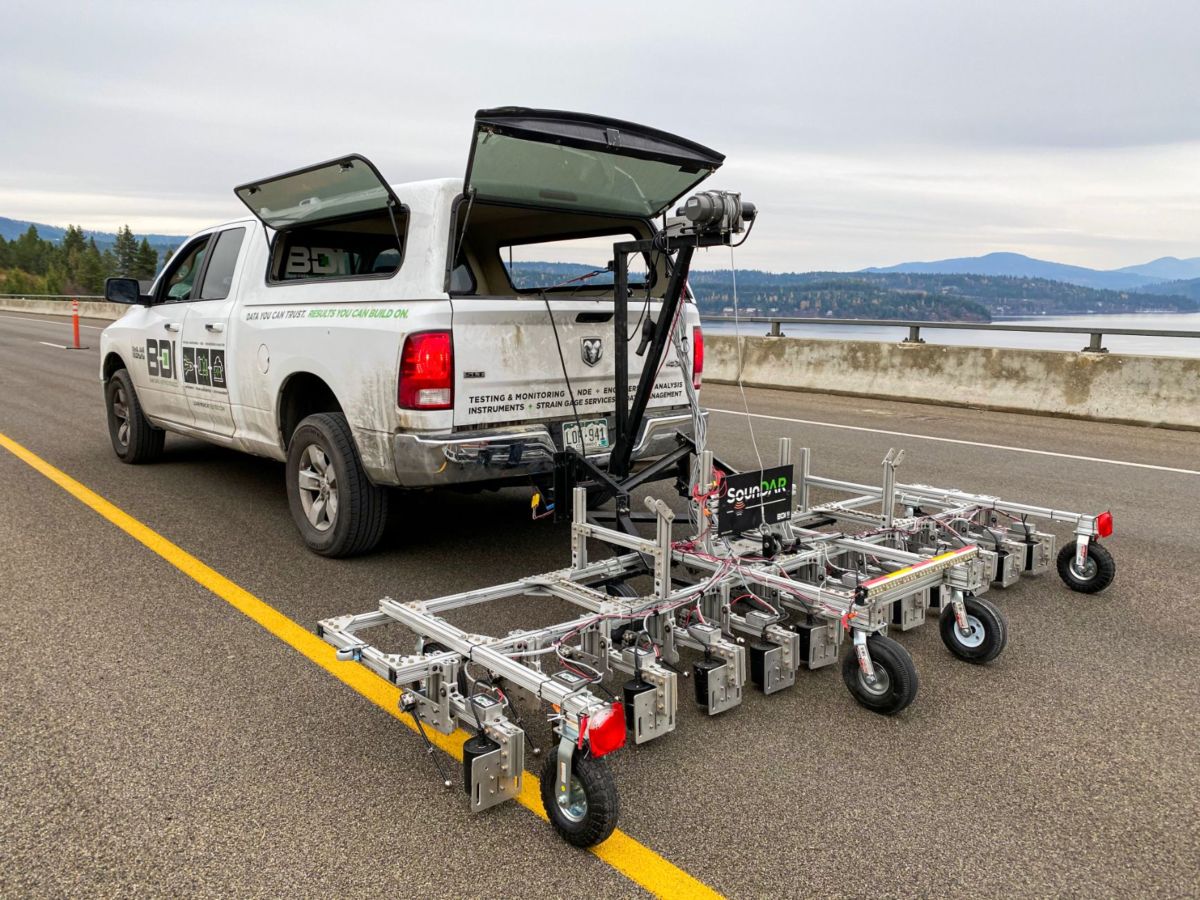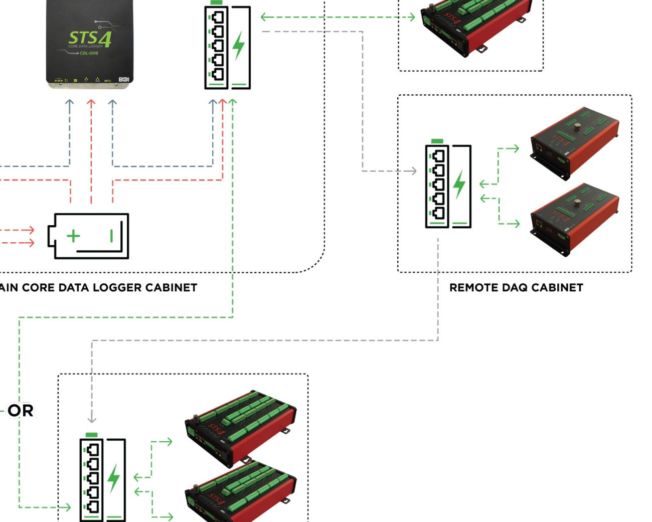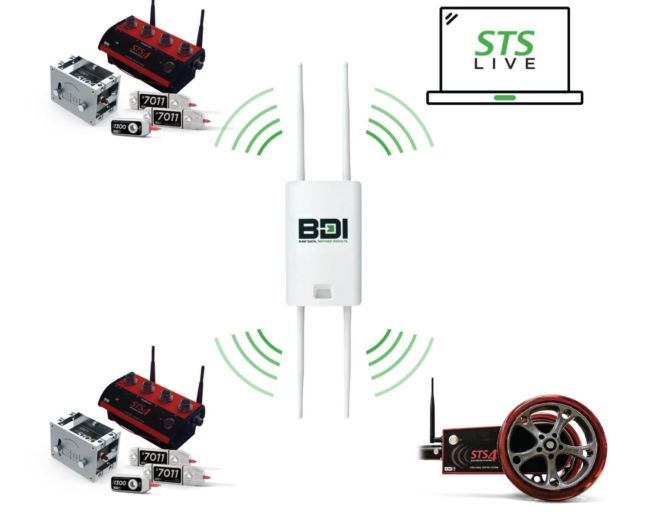BRIDGE DECK TESTING IN A FRACTION OF THE TIME TYPICALLY REQUIRED BY CHAIN DRAG, RESULTS PRODUCED REFLECT THOSE TYPICALLY ACHIEVED BY CHAIN DRAG AND THE HUMAN EAR.
Combining a variety of methods to accurately identify the location and size of flaws in concrete bridge decks and other structural concrete structures.
The deck acoustic response (DAR) method is used to identify and quantify areas of subsurface degradation including delamination, debonding, and spalling. SoundDAR utilizes a novel analysis method that replicates the function of the human ear by detecting changes in frequency, amplitude, and relative energy distribution. In this way, it provides an automated NDE method similar to manual sounding at a fraction of the cost.
High Resolution
Video (HRV)
BDI pairs this service with other NDE techniques such as GPR and IR, but most importantly with HRV. HRV data results in a visual map of the bridge deck collected utilizing a 4k high-resolution video camera. The HRV camera is capable of capturing a full lane width of data per driving pass.
Data
Presentation
These results of HRV are provided in 4K resolution with overlaid SounDAR data identifying other physical features of the bridge deck such as debonding, patching, and delaminations.

SounDAR Data Provided in Contour Plot Fashion with Level of Degradation Severity
How can the SounDAR technology help with your asset maintenance goals?




